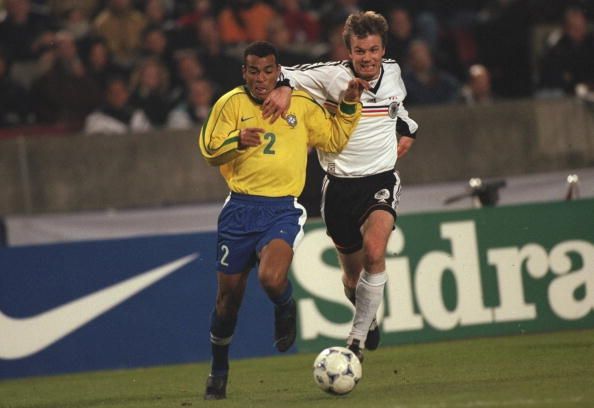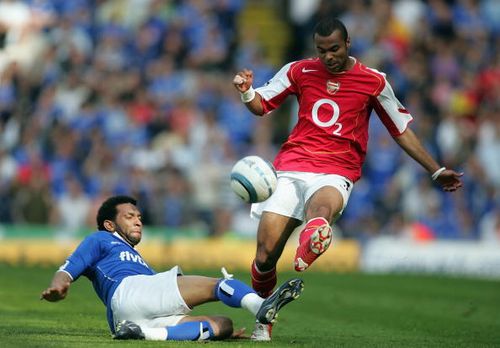
5 tactical changes of the past decade: Part 4 - Growth of attacking full backs

The beautiful game is always evolving and it has done so remarkably in the last decade. Football has now become more dynamic and faster, with much more attacking and versatile players. The degree of evolution can be easily noticed by looking at just one position – the fullbacks. Running up and down the flanks, the entire length of the field, fullbacks are perhaps the only players in the field who need to be strong, ideally, in both the offensive and defensive side of the game. A fullback’s role in no longer just to mark the wide men and prevent the crosses into the box; he must also attack and provide crosses of his own.
The importance of the attacking qualities of the fullback is beyond question but to clearly define when this quality became vital, is very hard. The basic factor of this evolution though can be pointed out by the fact that fullbacks were the only players on the field who had more space and time on the ball when their team was on the ball. With the wide players of both teams picking each other up and the center-forward being a nuisance to the center halves, the fullbacks had space ahead of them to move into and frequently saw a lot more of the ball.
A look at the Italian side that won the World Cup in 2006 shows the marked difference that has come around in the role of a fullback. The introduction of Gianluca Zambrotta (a right midfielder earlier), who had more attacking qualities than his predecessor, the legendary Paolo Maldini, as the left sided fullback is proof of football’s tactical evolution. While Maldini was an efficient defender, strong in the tackle and in the air with wonderful anticipation and awareness, he lacked the attacking flair and mentality of his successor and, by extension, the current generation. This might perhaps be the reason why he played more in the center of defense towards the end of his career at AC Milan.
Contrary to Italy and other European countries where the rise of attack minded fullbacks is quite recent, Brazil has always had a legacy of great attacking full backs, a legacy that continues to this day. Since their switch to a 4-man defense back in the 60’s, Brazilians have had game changers as their full backs, ranging from Carlos Alberto to Roberto Carlos and Cafu, who were unplayable in the 2002 World Cup, to the current duo of Dani Alves and Marcelo who bomb forward with alarming regularity.
This system was brought to the English League by Arsene Wenger, who converted two attack minded players in Ashley Cole (originally a striker) and Lauren (originally a midfielder) into fullbacks, signalling just how important it was for the fullbacks to be comfortable on the ball and attack minded in his team. We all know what happened next – Arsenal became The Invincibles.

With the growth in the desire to play possession football towards the mid and late 2000′s, the teams started to pack the midfield and attack minded fullbacks became a necessity, as they had more space in the wide areas and also added width to the team. Now, for the team to take advantage of the width, the fullback needs to be accomplished in possession, adept at passing the ball and have tremendous stamina to run up and down the flank to perform offensive duties; all the while having the discipline and positional awareness to perform his defensive duties. With many teams moving away from the traditional wingers to inverted wingers, fullbacks now perform as auxiliary wingers by overlapping and providing an alternative for the team. It has to be said that in recent years, the attacking side of fullbacks has taken precedence over their defensive abilities.
With the traditional roles in football being redefined all the time, Barcelona, who play in a world of their own, always further changes to the role to suit their style of play. By squeezing up and playing a high defensive line (almost at the half way line), they allow the full back, mostly Dani Alves, to play much further up front (almost as a right midfielder) for prolonged periods of time, thus providing width to the side. Since Alves is very good at the dribbling and passing aspect of the game, the opposition winger is forced to come and track him, thus preventing the winger from running forward from an advanced position during counter attacks. This is particularly successful for Barcelona because they move up when in possession and this allows them to crowd the entire opposition team in their own half and with the high pressing style they employ, more often than not, they prevent the opposition from having enough time to organize a successful counter attack.
The threat of attacking full backs has grown so big that opposition teams are using their wide mid-fielders to stop the fullbacks from overlapping. Sir Alex Ferguson can be cited as the best example of a manager who uses this tactic. By using workhorses like Antonio Valencia (and Park Ji-Sung before him) on the wide positions, Sir Alex has, many times, succeeded in keeping the opposition fullbacks quiet.
There are very few teams in world football who do not use an attacking fullback. But with the emphasis on the attacking side, the players who can defend as well as attack can be singled out to an extent and this is the very reason why Gary Neville, Philipp Lahm or Ashley Cole are all seen in such high regard – because they are as comfortable in the opposition penalty box as they are in their own. With the growth of more creative and dangerous player on the flanks like Cristiano Ronaldo, Eden Hazard, Mario Gotze, it seems like the relevance of fullbacks who are defensively strong might just be an increasing trend. For all we know, we might be witnessing the next evolution of the beautiful game.
Earlier parts of this series can be found here.